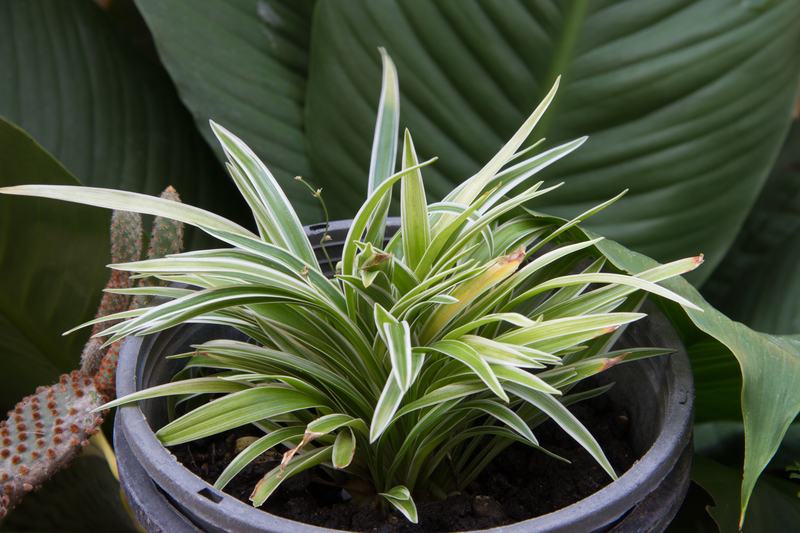Perfect Grass from Day One: Simple Lawn Care Advice for Beginners
Dreaming of a lush, vibrant lawn that turns heads in your neighborhood? Achieving the perfect grass from day one isn't as difficult or mysterious as it might seem. With a few simple lawn care tips, even beginners can grow and maintain a thriving turf that's the envy of the block.
Why a Healthy Lawn Matters
Beautiful, healthy grass does more than enhance your home's curb appeal. A well-maintained lawn can:
- Provide a safe, soft space for family and pets to play
- Improve air quality by filtering dust and pollutants
- Reduce soil erosion and water runoff
- Increase your property value
Understanding how to care for your lawn from the outset can save you time, money, and frustration down the line.

Step 1: Understanding Your Lawn's Foundations
Know Your Soil
Before you can grow perfect grass, it's vital to get to know your soil. Soil type and quality play a crucial role in how well your grass will grow.
- Test your soil: Many local garden centers offer inexpensive soil test kits, helping you measure pH and nutrient levels. Ideal lawn soil pH is slightly acidic to neutral (6.0-7.0).
- Add amendments: Based on your soil test, add lime to raise pH or sulfur to lower it. Incorporating organic matter, such as compost, improves soil structure and fertility.
Pick the Right Grass Type
Selecting the best grass for your climate and lifestyle is the foundation of a great lawn. There are two primary types:
- Cool-season grasses: Such as fescue, Kentucky bluegrass, and ryegrass, thrive in northern regions and stay green in spring and fall.
- Warm-season grasses: Such as Bermuda, zoysia, and St. Augustine, flourish in southern climates and grow vigorously during summer's heat.
For perfect grass from the start, always choose a variety suited to your region and sunlight conditions.
Step 2: Preparing the Ground for Perfect Lawn Establishment
Clear and Level the Area
A common beginner mistake is to sow seed or lay sod on unprepared ground. Instead:
- Remove debris: Pull out weeds, rocks, and old grass.
- Grade the soil: Use a rake to create a gently sloping surface, preventing water from pooling (which can damage grass roots).
Loosen and Improve the Soil
- Till the top 4-6 inches: Loosening soil helps roots establish deep and strong.
- Add organic matter: Mix in compost or well-rotted manure for richer soil and better drainage.
Step 3: Planting for a Lush, Green Lawn
Seeding vs. Sodding: Choosing Your Method
Both seeding and sodding can result in healthy, perfect grass, but which is best for your lawn?
- Seeding: More affordable, with a wider range of grasses, but requires more patience and care during germination.
- Sodding: Instant results, erosion control, and faster use, but costs more and offers fewer grass variety choices.
Whichever you choose, read instructions for seed/sod coverage, and don't overseed or overlap sod strips.
Proper Planting Techniques
- For seed: Spread evenly using a broadcast spreader, then lightly rake to cover with 1/4 inch of soil. Gently press seeds into the soil with a lawn roller or your feet.
- For sod: Lay strips tightly together, staggering seams like bricks. Press edges to ensure good soil contact, and keep seams moist.
Watering for Success
Water is crucial in the first weeks. Aim for:
- Light, frequent watering at first (1-2 times daily) to keep the soil moist but not soggy
- Gradually reduce to deeper, less frequent watering as grass establishes
- Morning is the best time to water -- reduces evaporation and fungal risk
Step 4: Easy Lawn Maintenance for Beginners
Mowing: How and When
Mowing is key for healthy, perfect grass.
- Begin mowing when grass reaches 3-4 inches tall (wait until new grass is well-rooted)
- Never remove more than 1/3 of the blade height at once -- this promotes thicker growth and reduces weeds
- Keep mower blades sharp
- Leave grass clippings to return nutrients to the soil unless they clump
Fertilizing for Vibrant Color
- Apply fertilizer after your new lawn has been mowed 2-3 times (usually after a month)
- Follow the recommended rates on the bag -- over-fertilizing can burn grass!
- Use a lawn-specific fertilizer with balanced nutrients: nitrogen (N), phosphorus (P), and potassium (K)
For the greenest grass, fertilize in spring and fall (cool-season) or late spring and summer (warm-season).
Watering Routine After Establishment
- Once established, water 1-2 times per week, deeply (1 inch per session)
- Avoid shallow, daily watering -- it encourages weak roots
Simple Weed and Pest Control
- Healthy, dense grass chokes out most weeds naturally.
- Hand-pull weeds that pop up, especially when young.
- Use pre-emergent weed preventers in early spring (after the first mow) if you have a big weed problem.
- Keep an eye out for bare patches, which attract weeds and pests.
- If you spot insects or disease, check with your garden center for targeted solutions.
Step 5: Seasonal Lawn Care Tips for Year-Round Perfection
Spring Lawn Care
- Rake up any debris and lightly dethatch if needed
- Overseed thin areas
- Apply pre-emergent weed killers (if desired)
- Fertilize cool-season lawns
Summer Lawn Care
- Raise mower height -- longer blades shade soil and fight drought
- Water deeply, early in the day
- Spot-treat any pests or persistent weeds
Fall Lawn Care
- Best time to overseed or plant new grass
- Rake leaves regularly
- Apply lawn fertilizer for root growth
- Reduce mowing as growth slows
Winter Lawn Care
- Limit foot traffic on dormant grass to avoid compaction and damage
- Keep the lawn clear of heavy debris
- Plan for spring improvements -- soil testing, equipment maintenance, etc.
Bonus Tips for the Best-Ever Lawn
- Mulch your grass clippings: Returning nutrients to the soil naturally helps maintain lush grass.
- Sharpen mower blades regularly: Dull blades tear and stress grass, leading to brown tips.
- Aerate your lawn: Once a year (especially if you have heavy clay soil or regular traffic) to improve water and nutrient absorption.
- Edge your lawn: Neat edges make any grass look professionally cared for.
Common Beginner Lawn Care Mistakes to Avoid
- Overwatering or underwatering: Both can harm your turf! Aim for deep, infrequent waterings once established.
- Mowing too short: Scalping stresses grass, invites weeds, and exposes roots.
- Ignoring soil compaction: Hard, compact soil prevents healthy roots. Aerate if water pools or grass looks stunted.
- Skipping soil testing: Guessing at fertilizer or pH solutions often wastes money and can damage your lawn.
- Planting the wrong grass type for your area: Always choose grass that matches your region's climate.
When to Seek Professional Lawn Care Help
If your lawn faces complex issues (like persistent fungus, extreme soil problems, or major pest infestations), contact a local lawn care pro. However, most perfect grass results are achievable with the steps in this guide.

Frequently Asked Questions about Beginner Lawn Care
How often should I mow my new grass?
Begin mowing when the new grass is 3-4 inches tall. After that, mow weekly or as needed. Remember the "one-third" rule to avoid cutting too much at once.
What's the best fertilizer for beginners?
Choose a starter fertilizer with balanced nutrients (N-P-K) or a mix tailored to your soil test results. Always follow product label instructions.
Can I grow a great lawn from seed?
Absolutely! With quality seed, good soil prep, and regular watering, seeded lawns can look every bit as great as sodded ones -- just allow extra time for establishment.
How do I prevent weeds in new grass?
A thick, healthy turf is your best defense. Mow high, water properly, and fill bare patches quickly. Use specialty weed preventers if needed, but always check their compatibility with new grass.
Conclusion: Your Journey to Perfect Grass Starts Today!
Perfect grass from day one is within your reach -- no advanced expertise required. By following these simple, step-by-step lawn care tips for beginners, any homeowner can enjoy a beautiful green space. Start by understanding and preparing your soil, choose the right grass type, plant with care, and follow easy maintenance routines for mowing, watering, and feeding.
Lawn care gets easier with experience, and each season your lawn will grow lusher and more resilient. Whether you dream of barefoot summers or impressing the neighbors, your path to the best lawn on the block starts right here!
Ready to Grow Perfect Grass?
Start today with these simple lawn care steps and watch your yard thrive, year after year!
```